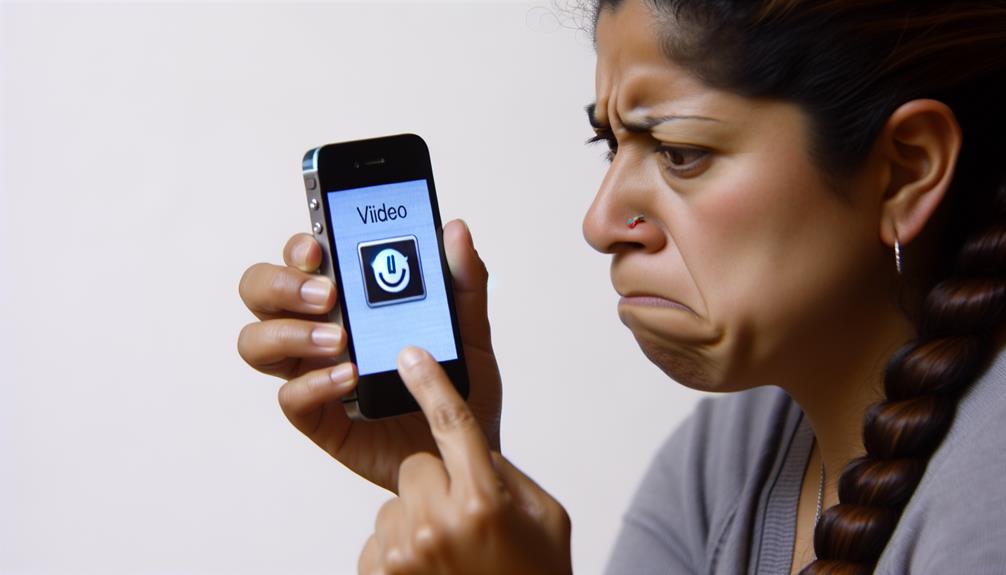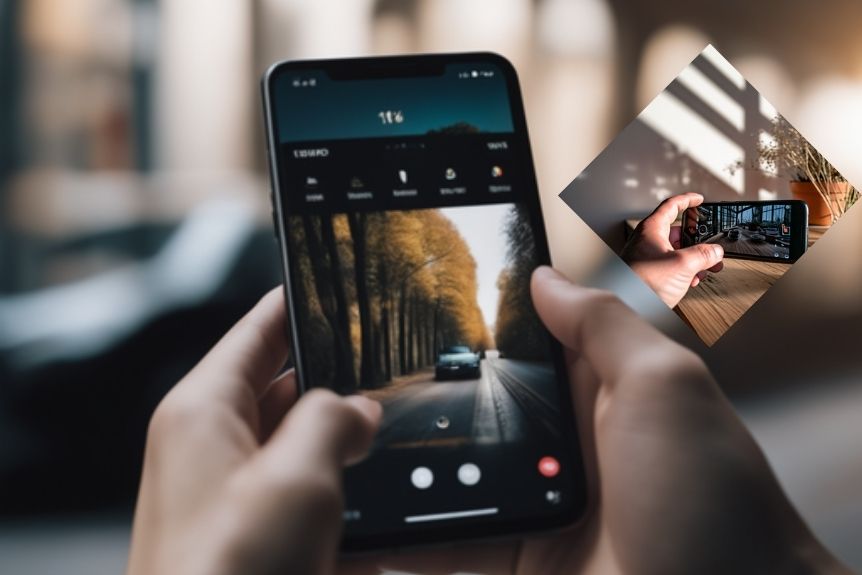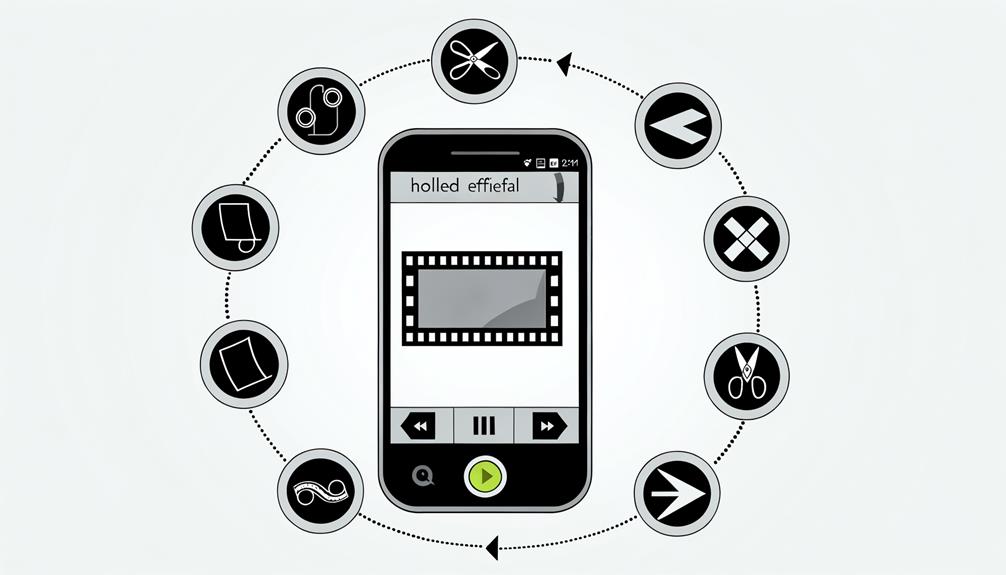If your videos won’t play on your iPhone camera roll, it’s likely due to a few common issues. You might have app restrictions limiting access to media content. Storage might be low, as even deleted media can take up space for up to 30 days. It could also be due to recent edits to the videos themselves, which you can revert to solve playback issues. Additionally, the Storage Optimization feature could be causing loading difficulties. If you’re keen to learn more, we’ll expand on these solutions in the following sections.
Restarting Your Iphone

One of the first steps you can take to troubleshoot video playback issues on your iPhone camera roll is to perform a simple restart, which can often resolve RAM-related glitches and optimize your device’s performance. By doing this, you allow your iPhone to reset its internal processes, thereby potentially fixing any media loading issues you may be experiencing with websites and videos.
Your iPhone is a sophisticated device, but it’s not immune to the occasional hiccup. That’s where restarting comes into play. To perform a complete restart, turn off your iPhone and wait for at least two minutes before turning it back on. This simple action can have a significant impact, optimizing performance and resolving any playback issues on your iPhone’s camera roll.
In addition to restarting your iPhone, you may also need to tweak some settings in the Photos app and disable certain restrictions. Specifically, you may need to disable Content and Privacy Restrictions. These restrictions can sometimes interfere with video playback on your iPhone camera roll. By adjusting these settings, you’re more likely to resolve your video playback issues and enjoy your media without interruption.
Clearing Deleted Media

Understanding how your iPhone manages storage space is essential for efficient video playback.
Did you know that your deleted media remains on your device for 30 days before it’s permanently removed?
Let’s discuss how to effectively clear this media and the impact it can bring on your device’s performance.
Understanding Iphone Storage Space
Did you know that your iPhone retains deleted media for up to a month in the ‘Recently Deleted‘ album, which can take up valuable storage space? This storage feature is part of Apple’s Storage Optimization system. It’s designed to make sure you don’t lose any important photos or videos accidentally. But keep in mind, it’s not permanent storage.
Regularly clearing your ‘Recently Deleted’ album can help keep your iPhone Storage at peak levels and prevent storage-related performance issues. It’s a simple but effective way to manage your Deleted Media and may even resolve some video playback issues.
Here’s a quick guide:
| Action | Result |
|---|---|
| Clear ‘Recently Deleted’ | Free up space |
| Storage Optimization | Efficient space management |
| Delete large media | Triggers optimization |
| Regular clearance | Prevent performance issues |
Understand your iPhone Storage well to maximize its efficiency.
Impact of Deleted Media
When you delete media on your iPhone, it’s not immediately gone forever – instead, it’s moved to the ‘Recently Deleted’ album where it stays for up to 30 days before being permanently removed. This can cause your Camera Roll to seem cluttered and may even lead to video playback issues.
You mightn’t realize it, but this deleted media is still taking up valuable storage space and affecting the performance of your phone. So, how does clearing this deleted media impact your iPhone? Well, it frees up space, which can improve the overall performance of your Camera Roll.
Additionally, disabling storage optimization and clearing deleted media can enhance video playback, reducing the likelihood of encountering issues when trying to view videos on your iPhone.
Steps to Clear Media
If you’re looking to free up some space on your iPhone and enhance video playback, clearing your ‘Recently Deleted’ album is a straightforward process that can make a real difference. This not only aids in storage optimization but also potentially resolves issues with videos not playing on your Camera Roll.
To clear media, simply follow these steps:
| Step | Action | Result |
|---|---|---|
| 1 | Open Photos app | Access to albums |
| 2 | Select ‘Recently Deleted’ | View deleted media |
| 3 | Choose ‘Select’ | Mark items |
| 4 | Tap ‘Delete All’ | Clear media |
Disabling App Restrictions
App restrictions on your iPhone can often be the unseen culprit causing video playback issues, particularly within the camera roll. Unbeknownst to many, these restrictions can limit access to media content, resulting in unexpected trouble when trying to play your videos.
To address this, you’ll need to venture into the Settings app on your iPhone. Here’s a step-by-step guide:
- Open your Settings app and scroll down to find the ‘Screen Time‘ option.
- Tap on ‘Content & Privacy Restrictions.’
- If it’s enabled, you’ll need to disable it. Simply move the slider to the off position.
- You’ll be asked for your Screen Time passcode. Enter it to confirm.
- Finally, restart your device to make sure all changes take effect properly.
Disabling the Content and Privacy Restrictions should help resolve your video playback issues. Remember, these restrictions are designed to control the type of content that can be accessed on your device, so turning them off temporarily for troubleshooting purposes won’t harm your device. If you’re still experiencing issues after this, consider exploring further troubleshooting methods.
Reverting Video Edits

In some cases, you’ll find that playback issues with your iPhone camera roll videos can be resolved by simply reverting any video edits made within the Photos app. This is because some edits, such as filters or trimming, can occasionally cause formatting issues that hinder video play.
To revert video edits, navigate to the specific video within your Photos app. From there, select the ‘Edit’ option. This will present you with a variety of editing tools, but for this purpose, you’re interested in the ‘Revert’ option. Selecting this will give you the option to revert to the original video, undoing any edits that you have made.
Turning Off Storage Optimization
If you’re facing issues with your iPhone camera roll videos, turning off storage optimization could be the solution.
By understanding what storage optimization does and learning how to disable this feature, you’re on your way to smoother video playback.
However, be aware there could be potential after-effects, such as increased storage use on your device.
Understanding Storage Optimization
Understanding storage optimization on your iPhone is crucial, as it’s often the culprit behind video loading issues in your camera roll. Fundamentally, storage optimization works by transferring videos to iCloud when your device is low on memory. While this saves space, it can disrupt video playback.
Let’s explore further:
- Storage optimization transfers videos to iCloud, which can lead to loading issues.
- Disabling this feature guarantees videos are stored locally, improving playback.
- You can disable storage optimization in iCloud settings to resolve video playback issues.
- Choosing ‘Download and Keep Originals‘ prevents videos from being transferred.
- Turning off this feature is a recommended solution for loading issues on your iPhone’s camera roll.
Mastering storage optimization can greatly enhance your iPhone video experience.
Disabling Optimization Feature
To eliminate video loading issues, you’ll want to contemplate turning off the storage optimization feature on your iPhone. Disabling storage optimization isn’t overly complicated. You need to select the ‘Download and Keep Originals‘ option, enabling your iPhone to retain the original video files on your Camera Roll.
By doing so, your iPhone will bypass potential delays or loading problems caused by optimization processes. The table below provides a quick guide to disable storage optimization.
| Steps | Path | Action |
|---|---|---|
| 1 | Settings | Open |
| 2 | Photos | Select |
| 3 | Download and Keep Originals | Tick |
Get rid of those pesky video playback interruptions by following these steps. It’s the first line of defense against video loading issues on your Camera Roll.
Potential After-Effects
While you’ll find that disabling storage optimization can greatly enhance your iPhone’s video playback, it’s important to contemplate potential after-effects this change may bring. This process, although beneficial for video playback, might result in several other consequences.
Here are five potential after-effects to keep in mind:
- Your iPhone’s available storage might decrease considerably.
- You could experience slower overall phone performance.
- Other applications may struggle to update or download.
- You may not be able to store as many photos or videos on your iPhone Camera Roll.
- Backups to iCloud could take longer than usual.
Using Alternative Media Players
If your iPhone’s default video player doesn’t meet your needs, consider installing third-party media players, such as VLC, which can support a broader range of video formats and codecs. These alternative media players enhance compatibility and guarantee you have a better chance at playing videos that may not work with the default player.
Third-party media players like VLC don’t just improve format compatibility. They also offer additional features and customization options that can enrich your video playback experience. For instance, you might enjoy more control over video speed, subtitles, and audio syncing. These features can make a significant difference if you’re watching movies or other long-form content on your iPhone.
Here’s a quick comparison of iPhone’s default video player and VLC:
| Features | iPhone Default Video Player | VLC Player |
|---|---|---|
| Video Formats | Limited | Wide Range |
| Customization Options | Standard | Extensive |
| Additional Features | Few | Many |
